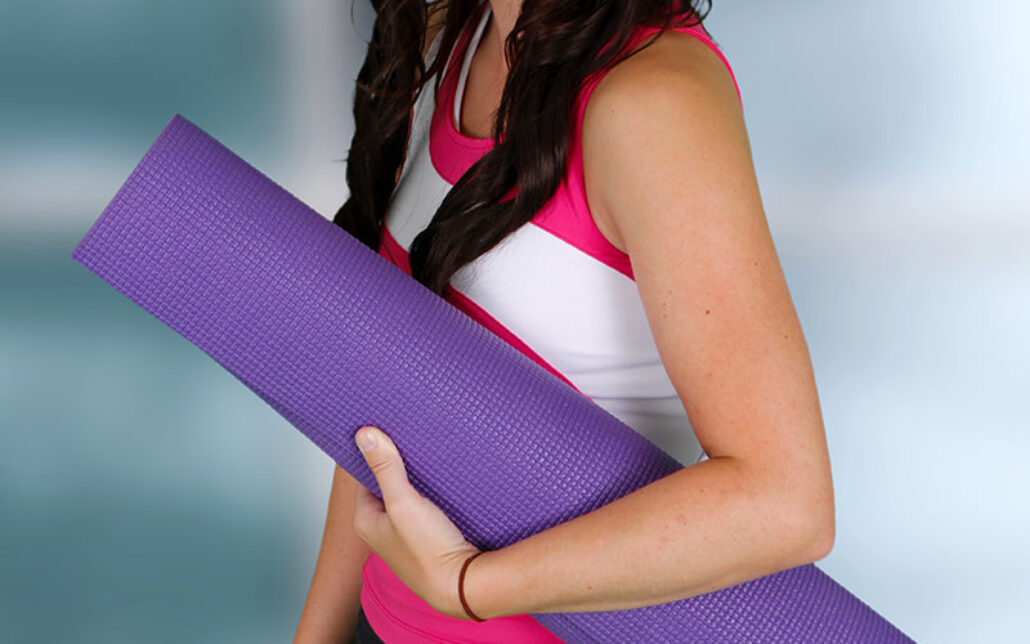Curious about yoga? Dr. Skendzel and his team have some suggestions for safely making yoga a part of your exercise program.
Fans of yoga abound, and speak passionately about its benefits. In the United States alone, twenty million people know downward dog—one of the classic yoga poses. Most Twin Cities neighborhoods boast at least one yoga studio, and almost everyone has a friend or relative urging them to try a class. But benefits go hand in hand with risks. In his book,
The Science of Yoga
, William Broad explains that yoga incorrectly practiced can cause injury to complex joints including lower back, shoulders, knees, hips and the neck.
“I don’t do yoga myself, but my wife loves it, and both my certified athletic trainer, Melissa Bowers, and our patient coordinator, Alex McDowell, are practitioners,” says Dr. Skendzel. “In fact, Alex is a yoga instructor. Yoga is no different from any other exercise; you have to know your body and your limitations.”
When practiced properly under the guidance of a well-trained instructor, yoga makes a positive contribution to four major components of physical fitness: cardio, strength, flexibility, and balance. At its best, yoga works major muscle groups, gets your heart rate up, stretches tight muscles, and improves balance. Dr. Skendzel, Melissa, and Alex offer a couple of guidelines to ensure that your yoga practice reaps all of these benefits, while avoiding the risks.
Know your ability
“Whenever you begin a new exercise program, it’s important to be conscious of your body and its abilities,” says Melissa. “Alex and I are big believers in the study of biomechanics—the physics of the body. For both instructors and students, it’s important to know how your muscles work together. Knowledge is power.”
Know your instructor
Melissa and Alex encourage patients to look into the background of yoga practitioners. Is this someone who just opened his or her own yoga studio? What kind of training does the instructor have? “Unfortunately, there are instructors who are not educated about anatomy, and this is where yoga can go wrong,” explains Alex. “Yoga certification will not tell you how many hours of certification an instructor has. The ideal instructor knows anatomy, and has a kinesiology or biomechanics physiology background. Don’t be afraid to ask questions and do a little homework. When I go to a class, I can tell immediately when an instructor has a good background, and when they don’t.”
Know your limitations
“Often, yoga injuries occur because people don’t know their limits and push too far into a stretch that their body isn’t ready to complete,” explains Melissa. “When something doesn’t feel right, you know. We encourage patients to accept the fact that they aren’t going to be perfect as beginners, and direct them to focus on learning proper technique.”
During Minnesota winters, a warm yoga studio can seem far more inviting than a snow-covered running path. With a qualified instructor who has your best interest in mind and knows the human body, yoga is a great way to maintain strength and improve balance during our colder months, and any time of year.
Summit Orthopedics offers comprehensive sports medicine expertise
From Olympians to pro athletes to kids in youth sports and those that just want to be more active—Summit Orthopedics delivers expert care by fellowship-trained sports medicine physicians. If you are recently injured or concerned about ongoing pain, Summit Orthopedics sports medicine specialists have the expertise to evaluate your discomfort and develop a plan to quickly and safely help you get back to being active.
Start your journey to stronger, healthier athletic condition. Find your sports medicine expert, request an appointment online, or call us at (651) 968–5201 to schedule a sports medicine consultation.
Summit has convenient locations across the Minneapolis-St. Paul metro area, serving Minnesota and western Wisconsin. We have state-of-the-art centers for comprehensive orthopedic care in Eagan, MN, Vadnais Heights, MN, Plymouth, MN, and Woodbury, MN, as well as several additional community clinics.


